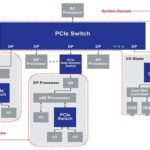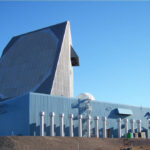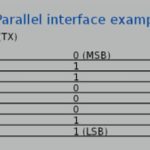Digitally isolated transceivers are available for industrial applications, electric vehicles, satellites, communications, data processing, and medical systems. They are available for specific protocols like control area network (CAN), RS485, RS422, and RS232, serial peripheral interface (SPI), I2C, low-voltage differential signaling (LVDS), and others. Some support multiple protocols.
They can have a single channel or multiple channels and can be based on various digital isolation techniques like magnetic coupling, capacitive coupling, or giant magnetoresistive (GMR) technology. They are packaged as individual ICs and as modules that integrate galvanic isolation, discrete components, ICs, and power onto a single substrate. One thing they all have in common is galvanic isolation which can provide safety for personnel and eliminate the effects of noise and common mode voltages to improve equipment operation.
Industrial isolation
In one case, a galvanically isolated full-duplex RS485/RS422 transceiver module is available using a coupled inductor and an isolation power transformer that provide 2.5 kVrms isolation between the transceiver and logic interface (Figure 1). A single 5V supply powers both sides of the interface through an integrated isolated dc/dc converter. It offers a maximum data rate of 20 Mbps or 250 kbps in slew-limited mode and provides robust communication even in the presence of common mode transients greater than 30 kV/μs.

CAN for cars, EVs & satellites
An AEC-Q100-qualified CAN transceiver is available that provides silicon dioxide (SiO2) capacitor-based galvanic isolation between a CAN controller and the 2-wire CAN bus. It’s optimized for use in EVs and hybrid electric vehicles (HEVs) that require galvanic isolation between high- and low-voltage systems. In addition to providing high levels of safety and signal integrity, this IC is ISO 11898-2:2016 and SAE J2284-1 to SAE J2284-5 compliant. Timing is guaranteed for data rates up to 5 Mbps in the CAN flexible data rate (CAN FD) fast phase.
Another architecture combines a SiO2 capacitor-based quad-channel digital isolator and a magnetically isolated dc/dc converter IC with a CAN FD transceiver to deliver isolated communications in programmable logic controllers (PLCs) and automotive applications (Figure 2).

In addition, to industrial and automotive applications, CAN bus is increasingly being used in satellite designs. Compared with RS-422 and RS-485, CAN buses have lower supply and common mode voltages that simplify interfaces to microcontrollers and other system elements. While operator safety is not a concern in satellite designs, prevention of ground loops is very important, and it’s supported with galvanically isolated transceivers. An isolated CAN bus can provide protection against transients induced on the bus, like those caused by radiation like Single Event Effects (SEE) from heavy ions in space. The isolation in these transceivers is implemented using GMR technology, a type of spintronics.
Serial peripheral interface
Isolated SPI transceivers are found in instrumentation, data acquisition, and medical systems in addition to automotive and industrial networks. One IC includes a general-purpose SPI to isolated SPI transceiver that bidirectionally transfers data from a conventional 4-wire based SPI interface to a 2-wire isolated interface.
The isolated SPI interface has two operating modes, 33 kbps and 2.66 Mbps. The asynchronicity between the two sides is controlled internally, and the device can support all possible frequency configurations on both sides.
Summary
Isolated communication buses are important in a wide range of applications to provide safety for operators and robust system operation. Digitally isolated transceivers are available for almost every transceiver protocol, and they employ a wide range of isolation technologies to suit specific operational requirements.
References
Isolated CAN Bus for Small Satellite Applications, Renesas
Isolated CAN With Integrated Power Reference Design, Texas Instruments
Isolated Data Transmission and Power Conversion Integrated Into a Surface Mount Package, Analog Devices






